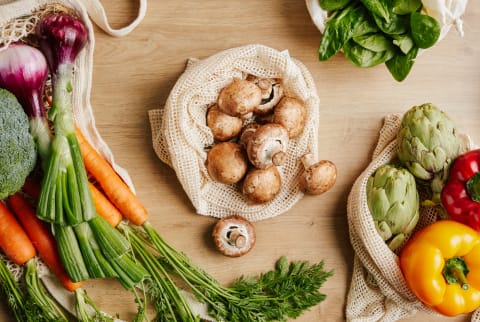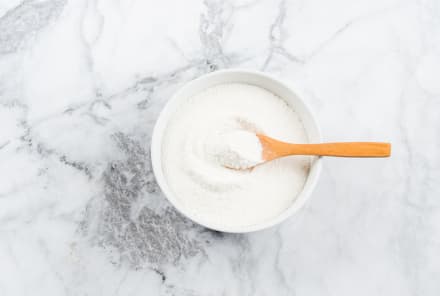Advertisement
2020's Dirty Dozen & Clean 15 Lists Are Out — Here's What You Should Know


Every year, the Environmental Working Group (EWG) analyzes data from the USDA to determine which fruits and vegetables in the U.S. have the most pesticides and which have the least. The lists, dubbed the Clean 15 and the Dirty Dozen, are not meant to tell shoppers to avoid these fruits and veggies altogether, but to help them make informed decisions when it comes to purchasing.
"Since the Clean 15 are low in pesticide residue—whether it's because they have a peel or simply the way they were produced—those can be bought conventional with low risk," researcher and toxicologist Alexis Temkin, Ph.D., told mbg. This list can be helpful for those of us who don't have the access or financial resources to buy all their fresh foods organic.
Let's take a look at the highs and lows on this year's just-released list. (And if you're curious, you can compare them to the 2019 dirty dozen list here.)
The Clean 15
- Avocados
- Sweet corn
- Pineapple
- Onions
- Papaya
- Sweet peas (frozen)
- Eggplants
- Asparagus
- Cauliflower
- Cantaloupes
- Broccoli
- Mushrooms
- Cabbage
- Honeydew melon
- Kiwi
Like last year, avocados came in as the "cleanest," followed closely by sweet corn. Each had less than 2% of samples showing any pesticide residue. The rest of the list still had comfortingly low levels, though. According to the report, "Almost 70% of Clean 15 fruit and vegetable samples had no pesticide residues."
What's so bad about pesticides?
"Pesticides are designed to kill unwanted organisms, like weeds, so they're naturally designed to have a toxic effect," Temkin said. "And research has shown, when you're exposed to chronic low doses of mixtures of pesticides, it can produce adverse health effects."
The Dirty Dozen
- Strawberries
- Spinach
- Kale
- Nectarines
- Apples
- Grapes
- Peaches
- Cherries
- Pears
- Tomatoes
- Celery
- Potatoes
Looking at this list, we can conclude that fruits and veggies that have delicate exteriors (and therefore run the risk of being destroyed by insects or infection before they make it to market) tend to need more protective chemicals—which makes sense. "When growers decide when to use pesticides, it's really a business decision," explains Naidenko. "Their goal is not to spray a lot of pesticides and poison people but to get their produce to market."
If you're looking to avoid pesticides for the sake of your well-being (not to mention, the health of farmers and the planet), you might want to stay away from the softies. However, as the EWG notes, produce that is grown with pesticides is still better than no produce at all.
"The health benefits of a diet rich in fruits and vegetables outweigh the risks of pesticide exposure," the report FAQ reads. "Eating conventionally grown produce is far better than skipping fruits and vegetables."
Watch Next
Enjoy some of our favorite clips from classes
Enjoy some of our favorite clips from classes
What Is Meditation?
Mindfulness/Spirituality | Light Watkins
Box Breathing
Mindfulness/Spirituality | Gwen Dittmar
What Breathwork Can Address
Mindfulness/Spirituality | Gwen Dittmar
The 8 Limbs of Yoga - What is Asana?
Yoga | Caley Alyssa
Two Standing Postures to Open Up Tight Hips
Yoga | Caley Alyssa
How Plants Can Optimize Athletic Performance
Nutrition | Rich Roll
What to Eat Before a Workout
Nutrition | Rich Roll
How Ayurveda Helps Us Navigate Modern Life
Nutrition | Sahara Rose
Messages About Love & Relationships
Love & Relationships | Esther Perel
Love Languages
Love & Relationships | Esther Perel
What Is Meditation?
Box Breathing
What Breathwork Can Address
The 8 Limbs of Yoga - What is Asana?
Two Standing Postures to Open Up Tight Hips
How Plants Can Optimize Athletic Performance
What to Eat Before a Workout
How Ayurveda Helps Us Navigate Modern Life
Messages About Love & Relationships
Love Languages
Advertisement

This Little-Known Supplement Helps Women Sleep & Decreases Signs Of Depression
Molly Knudsen, M.S., RDN

This Little-Known Supplement Helps Women Sleep & Decreases Signs Of Depression
Molly Knudsen, M.S., RDN















